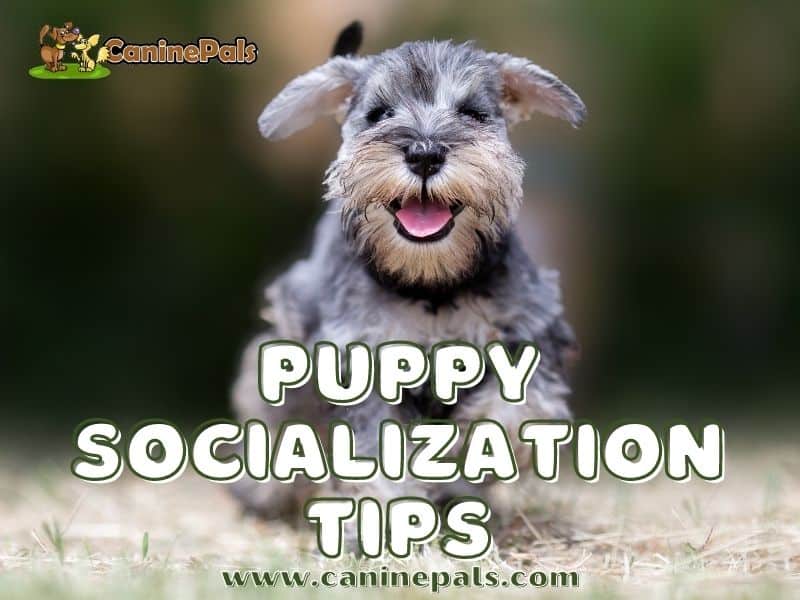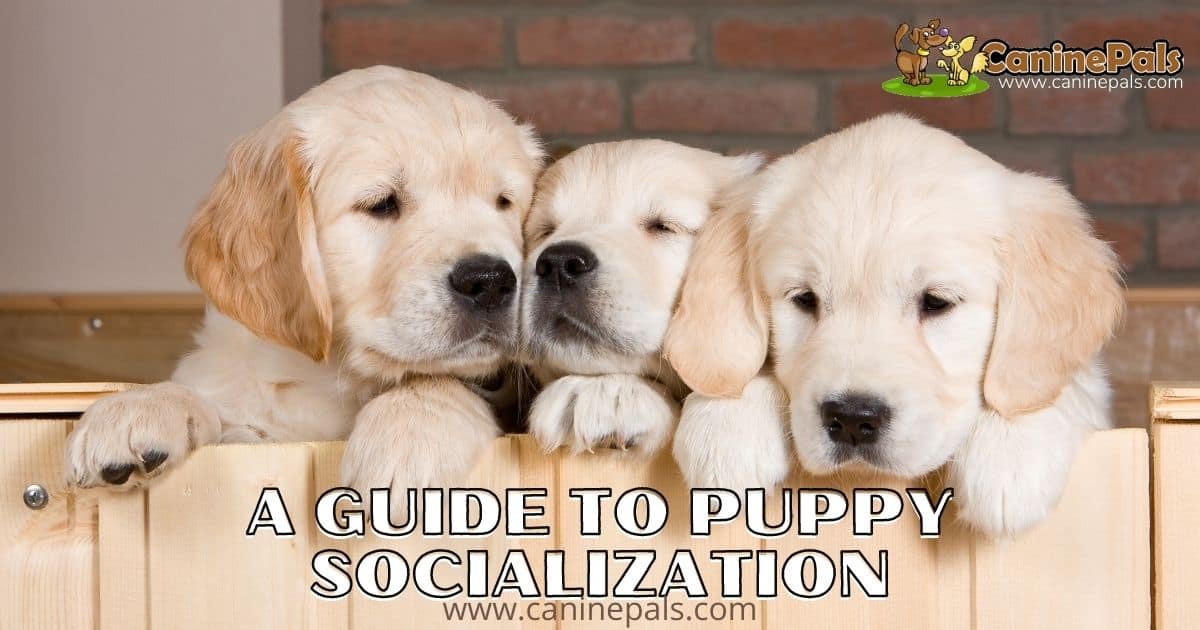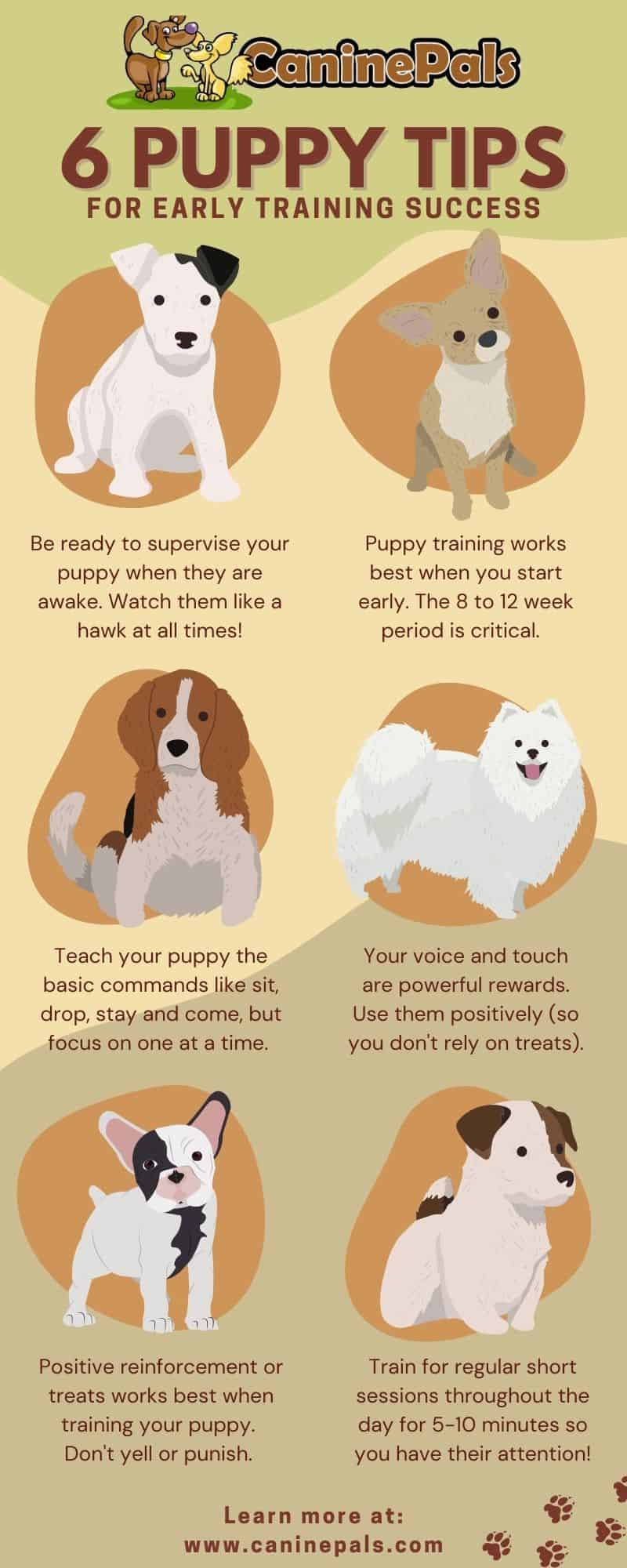Last Updated on September 9, 2023 by Denise Leo. Post first published on September 8, 2023.
If you’re a new puppy owner, it can be daunting to know where to start when it comes to socializing your pup. Socialization is essential for puppies to grow into happy and healthy dogs comfortable interacting with other animals and people.
To help you with this process, we have compiled this comprehensive puppy socialization checklist full of actionable tips so you have the tools to give your furry friend the best life possible!
What is the most important (and underrated) part of raising a dog? Puppy socialization. Whether you do right or wrong by your puppy can make or break many behaviors for the rest of their life.
It’s one of the most important (and underestimated) parts of raising a dog. The right (or wrong) socialization can make or break so many behaviors in their lives.
How do you know when a pup needs to be introduced to other dogs? Introducing your new dog into the world can be tough, but we have the advice to help.
Follow this complete puppy training guide and puppy socialization tips to help your puppy become a happy, well-socialized dog.
Like human babies, puppies can be a handful in their early years. They will need to be socialized and educated if they are going to turn into well-behaved adults.

Puppy Socialization Checklist
Always introduce new experiences positively and calmly, rewarding your puppy for calm and curious behavior. If your puppy shows fear or anxiety, stepping back and moving more slowly is okay.
| Category | Experiences & Situations |
| People | – Children
– Elderly – People with hats – People with beards – People using mobility aids (e.g., wheelchairs, crutches) |
| Animals | – Other dogs (of various sizes & breeds)
– Cats – Birds – Livestock (e.g., horses, cows) |
| Places | – Veterinary clinic
– Busy streets – Parks (quiet and busy) |
| Noises | – Traffic noise
– Vacuum cleaner – Doorbell – Thunder & Rain |
| Surfaces | – Grass
– Gravel – Slippery floors (e.g., tile, hardwood) – Carpet |
| Handling | – Brushing
– Bathing – Nail trimming – Ear cleaning |
| Transportation | – Car rides
– Public transport (if allowed) |
| Objects | – Umbrellas
– Bikes – Strollers |
| Situations | – Being left alone at home
– Meeting a stranger – Seeing a jogger or bicyclist – Encountering costumes or uniforms |
Our Puppy socialization list is just a basic checklist; you can always expand upon it based on your location, lifestyle, and any specific needs or exposures you anticipate for your puppy.
Remember, the goal is to provide positive experiences for each item. If your puppy seems scared or anxious, take a step back, reassure them, and try to make the experience positive with treats, toys, or praise.

Puppy Training Tips
Owners must understand puppy training basics so that all parties involved have a happy home life for many years.
New puppy owners need to understand dogs have a different way of socializing than people. Puppies heavily rely on smell, body language, and certain vocalizations.
They can be as young as one week old when they begin to socialize. The puppy socialization period is before 16 weeks of age, with the puppy socialization window closing around four months for most pups.
Dog socialization training should commence as soon as possible. Expose your puppy to various new things safely during the puppy socialization period.
How to properly socialize a puppy and a dog with other dogs. This isn’t easy with young puppies. Ask at your local Vet Clinic about puppy socialization classes or local dog socialization groups.
Knowing what puppy training tips are best for your pup can be hard. Luckily, we’ve compiled this list of the most important things dog owners should know about socializing their puppies
7 Puppy Training Tips for Early Success
- Supervise your puppy when he is awake.
- Start training your puppy early. The age from 8 to 12 weeks is critical and should not be missed.
- Before 16 weeks, teach your puppy basic commands, i.e., sit, stay, drop, come. But focus on one command at a time.
- Use your voice, treats, and touch as positive training methods.
- Never yell or punish your puppy during a training session.
- Keep training sessions short, but repeat them often. 5 to 10 minutes is sufficient.
- Training treats are a great way to reward your pup for good behavior in new situations.

Can Puppies Be Around Other Dogs?
Puppies must be isolated from all other dogs until he has all his vaccines. Most puppies that have been socialized that young will also have strong communication skills.
Some puppies, particularly those in the bigger breeds, may be awkward when mixing with friends and when introduced to new friends.
When Can Puppies Be Around Other Dogs?
Once the puppy has been vaccinated, a young puppy can mix with adult dogs and other puppies. Do not consider puppy classes or kindergarten until your new puppy is fully vaccinated.
Avoid dog parks. Dog parks can be dangerous places for young and small dogs. The dangers include infectious diseases, parasites, and the risk of being mauled by a larger, aggressive adult dog, which are very real.
Therefore, I recommend avoiding dog parks, even with older dogs.
How to Socialize a Puppy Before Vaccinations
Socializing a puppy is an essential part of raising it. Socialization helps the dog become acquainted with people and other animals while young, so you can prevent the puppy from forming any bad habits. Socializing also teaches your pup social skills that will come in handy later.
There are lots of ways to socialize a new puppy before vaccinations. For new puppy owners, enlist the help of a variety of people, like family and friends, to visit your pup in your own home.
Get them used to lots of noises like TV or radio, so they don’t get too shy around others when you’re not around. New environments can include car rides and a friend’s house.
Start training in an enclosed area (like a backyard) as soon as possible for best results.
The Power of Positive Dog Training
It’s important to reinforce positive behavior while introducing your puppy to these new things. In addition, developing good associations with people and environments will help them learn what is appropriate in both, making for an enjoyable experience later on.
Training treats are great because they offer an instant reward when executed correctly. Produce one of those yummy dog treats to reward good behavior. Don’t forget verbal praise. Talk up any accomplishments or successes during training time.
How To Socialize a Timid Puppy
A well-socialized puppy may abruptly demonstrate signs of fear-aggression, fear aggression, or extreme submissiveness. Your puppy may be a late bloomer and only have started meeting other dogs in dog parks, daycare, or while on walks.
The best way to do it is to only introduce your puppy to a few dogs at a time and slowly up the ante. If you’re forced to place your awkward puppy anywhere, there are too many dogs, but there are certain things you can still do.

Places to Socialize a Puppy. Places To Take Puppy For Socialization
Where to Socialize Puppy in Small Groups
1. Puppy Play Classes – Make friends with a person who owns a dog that’s a similar size to yours. Don’t introduce a Great Dane to a quiet Yorkie because it’s always going to be a mismatch. Ensure your friend’s puppy is dog-friendly, preferably calm, playful, and secure. Your Yorkie will probably take communication cues from him as he follows him wherever he goes.
2. Walking – Dogs without a leash behave differently from dogs on a leash. Always check with the other dog’s owner before making introductions. Watch the other dog’s behavior. Is he quite relaxed? Is he well-managed by his owner? When introducing, give your puppy a little slack on his leash. Is he quite relaxed? Is he well-managed by his owner? When introducing, give your puppy a little slack on his leash, but be ready to pull him back if necessary.
3. Dog Parks – Visit the dog park when it’s nearly empty. Watch the dogs already in the park before getting out of your car. What breeds, sizes, and mixes are they? If they interact but with a little aggression, forget about joining them. If the other owners aren’t watching their dogs, also forget about joining in. If you go into the park and try to mingle, keep a short leash on your puppy so you can rein him in at any time.

Best Way to Socialize a Puppy in Large Groups
1. Day-care – Check if a person is always observing the dogs. There can’t be more than ten dogs for every handler. If you can talk to the person beforehand and check his credentials so you have more confidence in his ability to control the dogs. Look for and identify places where your puppy can hide in case of trouble or if the other dogs play too rough.
2. Boarding – It’s possible that you can board your puppy in a kennel where he won’t have any contact with other dogs. However, they likely offer the dogs some playtime. If you need to board two or more dogs, request that they each get put in different groups. If placed in the same group, one will try to protect the other and start trouble. Request that the maximum number of dogs per group be five. Otherwise, there may be trouble.
3. Dog Parks – You might be fed up with hitting the dog park at 6 a.m. to avoid most dogs. However, you can take him at lunchtime (or have a dog sitter do it if you work all day). When you (or the sitter) get to the park, allow your puppy to sniff, stand at the park’s edge, and slowly let him walk in on his leash. If safety isn’t a concern, let him off the leash, but watch him at all times, following him if needed.
Dog Socialization With Other Dogs
Problems such as aggression can be managed with appropriate training, but don’t introduce your dog to others if you don’t know how he’ll react. The Pit Bull is an aggressive dog and should never be permitted where other less aggressive dogs congregate.
Learn about the subject of dog body language. Get a book, perhaps with pictures, and download it to your phone so you can read it anytime.
It will help you diagnose health problems quickly and take action. It’s not a bad thing to correct the behavior of another owner’s dog, provided you do it efficiently, positively, and gently.
Sound blowers, a citrus spray, or a simple spray bottle can stop a dog dead in his tracks. Even if your dog is well-behaved, use one of these ideas to stop barking or get their attention.
Read our tips for Socializing Adult And Older Dogs.

Final Thoughts on Puppy Socialization Checklist
Puppies are lots of work, but following these puppy socialization tips can make the job easier. These guidelines will help your pup develop into a happy, healthy, well-adjusted dog.
If there’s one thing we hope to accomplish with this article, it’s showing new owners how easy it can be to raise their puppies properly.
For more information on any aspect of raising a pup – from house training to walking them – please ask us anything. We love talking about dogs and would like nothing better than to help our readers learn all they need to know about caring for and loving their pups.
Socializing a puppy properly is an incredibly important and rewarding undertaking. It takes dedication, thoughtfulness, and patience to ensure your pup receives the best possible start in life.
Using the checklist you’ve read about today should help guide you through the process, but don’t hesitate to try something new and push beyond your comfort zone!
Take new experiences as they come and use resources like animal behaviorists or your veterinarian for further guidance.
If you keep your pup’s best interests in mind, socialization — while it may present some challenges along the way — should ultimately be enjoyable (and maybe even a little fun!) for both of you. Happy socializing!
Copyright CaninePals.Com. All Rights Reserved.
References and Further Reading:
American Kennel Club.
English Kennel Club.
Australian National Kennel Council.



